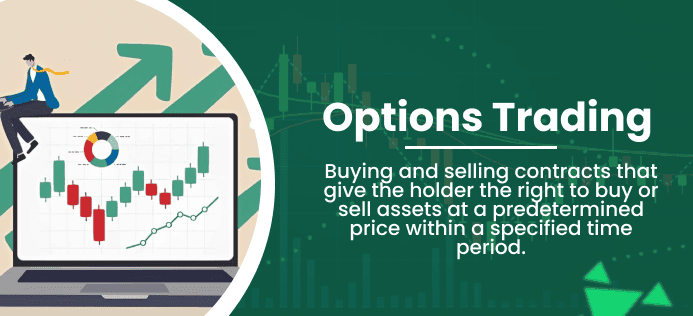Futures and options trading are two forms of financial derivatives that are used for trading in the financial markets. Derivatives are financial instruments whose value is derived from underlying assets, such as stocks, commodities, or currencies. These instruments are traded in the financial markets, and they allow traders to speculate on the future direction of the underlying asset’s price movements.
Futures Trading
Futures trading involves the buying and selling of futures contracts, which are legally binding agreements to buy or sell an underlying asset at a predetermined price and date in the future.

- Trading PlatformsFutures contracts are traded on exchange, and they are standardised in terms of contract size, expiration date, and settlement procedures.
- UsesFutures contracts can be used to hedge or speculate on the price movements of the underlying asset. For example, a farmer can sell a futures contract for their crop at a predetermined price to protect against the possibility of a price drop, while a trader can buy a futures contract for a commodity they expect to rise in price and sell it for a profit when the price rises.
Also Read: Basics of Stock Market: What You Need to Know Before Investing
Options Trading
Options trading involves the buying and selling of options contracts, which give the holder the right, but not the obligation, to buy or sell an underlying asset at a predetermined price and date in the future.
- Types of OptionsThere are two main types of options: call options and put options. A call option gives the holder the right to buy an underlying asset at a predetermined price, while a put option gives the holder the right to sell an underlying asset at a predetermined price.
- UsesOptions contracts give traders the opportunity to profit from price movements in the underlying asset, while also limiting their potential losses.
Basic Terminology in Futures and Options Trading
- Strike priceThis is the price at which the underlying asset will be bought or sold when the option is exercised.
- Expiration dateThis is the date on which the option expires, and the contract becomes null and void.
- PremiumThis is the price paid for the option contract, and it represents the cost of buying the right to buy or sell the underlying asset.
- MarginThis is the amount of money that traders are required to deposit as collateral when trading futures or options. The margin is used to cover any potential losses that may occur if the trade does not go as planned.
- In-the-moneyThis is the amount of money that traders are required to deposit as collateral when trading futures or options. The margin is used to cover any potential losses that may occur if the trade does not go as planned.
- Out-of-the-moneyThis term is used to describe an option that has no intrinsic value. A call option is out-of-the-money when the underlying asset’s price is below the strike price, while a put option is out-of-the-money when the underlying asset’s price is above the strike price.
- At-the-moneyThis term is used to describe an option where the strike price is the same as the current price of the underlying asset.
Recap
- Futures and options trading involve buying and selling futures and option contracts to speculate on the future direction of underlying asset prices and hedge against potential risks.
- Traders need to be aware of the risks involved, including potential losses and the complexity of these markets.
- Leverage can be an advantage, but it also increases the potential for losses, and traders should be careful not to over-leverage their positions.
- Liquidity is an important consideration, and futures and options markets are generally more liquid than the underlying asset markets.
- Traders should have a solid understanding of market fundamentals, technical analysis, and risk management strategies to be successful in these markets.

